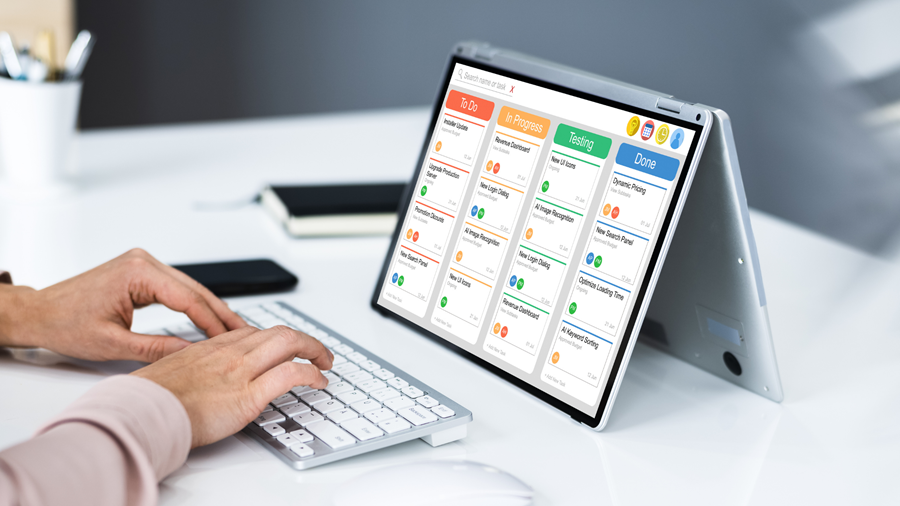Introduction to Azure Boards
In the world of software development and infrastructure management, keeping track of your path is not easy. Managing software projects end to end requires a plethora of tools to track the progress and keep tabs on what's going on in different sections of the project.
This is true when it comes to DevOps projects. Communication and tracking of work are absolutely critical and your team must be adept at delivering the project on time.
One tool that can help all of you in this process is Azure Boards. It can equip your teams with customizable tools and processes to efficiently manage the software projects without making a mess. Let’s understand everything about it in this post.
Table of Contents
- What is Azure Boards?
- Working of Azure Boards
- Boards, Backlogs, and Sprints
- Important features of Azure Boards
- Verdict
What is Azure Boards?
Azure Boards helps your team to track, manage, and monitor the progress of your software development work, features and even find code defects associated with your project. As said earlier, apart from providing a plethora of tools, it also includes native support to Agile, Scrum, Kanban processes, providing calendar views, customizable dashboards, and integrated reporting.
To the uninitiated, Agile is a popular software development methodology that follows an iterative approach with solutions evolving among self-organized cross-functional teams. The main reason software development teams adopt Agile is that it helps to maintain a disciplined software development path. These agile planning methodologies accommodated by Azure Boards help you to seamlessly integrate different features together and ensure the smooth delivery of your application.
Working of Azure Boards
Azure Boards constitute three categories of work items viz. Epics, Issues, and Tasks. Each time you add an Issue, Epic, or Task, you create a work item. Every work item you create represents an object. These objects are stored in the data item store. Each item has an identifier assigned to it. These identifiers are unique IDs assigned to each object.
Epics are added when you want to track major features and requirements in the project. Issues are added to track user stories, pending bugs, and smaller portions of work. Finally, tasks are regular tasks that take a limited amount of time that can be finished in a day or two, unlike epics which are major add-ons or features that take a pretty long time. Also, the tracker can be used both for hourly and daily tracking.
Boards, Backlogs, and Sprints
Azure boards provide a vast range of choices for planning and managing your work. Let us look at some of their core elements -
- Each project comes with an inbuilt Kanban board where you can see the work in progress from work “to be done” to “done” status.. Apart from that, you can streamline your processes through customizable cards, dashboards, swim lanes, and other visual tools.
- Your backlog contains a list of work items. You can use these work items to pass information, assign work to your teammates, track dependencies and organize your work to a great extent. Because of these work items appearing in order of their priority, your team knows what to work on next.
- Sprints are increments of work that your team can work on together. Each sprint consists of a backlog, burndown chart, and capacity planner to aid your team to complete the work within the stipulated time. You can assign work items to a sprint by dragging work items from the product backlog and dropping them in a sprint.
Important features of Azure Boards
- Azure boards implement Kanban, and work items are generally displayed on the Kanban board, allowing your team members to see the state of any work item. Kanban follows up on two important tasks- Updating the status of the issues and prioritizing issue backlogs.
- Also, Azure Boards allows communications to be facilitated seamlessly among your teammates by providing a discussion section to collaborate on issues or epics. You can even create alerts for the issues that are added, pending, and resolved, such that all the members in your team are aware of the pending items and those that have been already taken care of. Also, you can use the drag and drop feature to keep your most prioritized work on the top without losing the order. Since the work items also facilitate tracking, you can add up to 100 attachments for tracking and use the Azure platform for its cloud storage.
- Azure Boards provide you with the flexibility of planning out your sprints with ideal assignments. A sprint is a short period where the scrum team works together to complete a specific task. Also, Azure Boards allow seamless connectivity to GitHub repositories, so that push, pull, and commit operations can be performed by your team without much hassle. The only thing you have to do is link your pull requests and commits to each work item type and increase the productivity of your team at a faster pace. Also for the account, each work item stores the history of changes, so that you can review who changed what and where it is progressing.
- Gain end-to-end visibility from requirements to deployment. With dashboards and charts, teams can gain visibility into the tasks completed, progress, and feature development scattered across the team. Also with Azure Boards, you enjoy the full integration with the Azure DevOps platform. With Azure analytics, which is the reporting tool in the Azure DevOps platform, you can use Power BI to create complex and insightful reports based on the custom queries provided by the analytics service.
Verdict
Azure Boards is becoming increasingly popular among product managers and scrum masters in IT teams for their easy operability and easy management of the workflows. Azure boards is free to use and you can add up to 5 free users. Moreover, you can add any number of stakeholders to your Azure boards portal.
